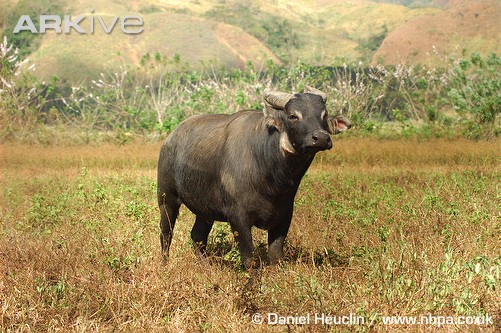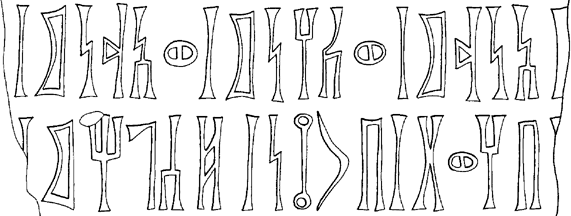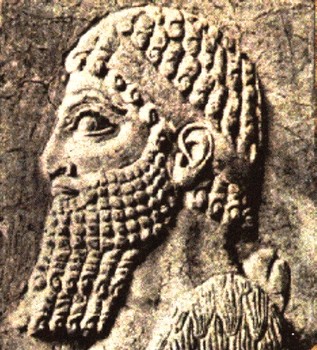1008 BCE:
From their homeland in the northeastern part of Pan-ay[1], clans who were the first direct ancestors of Hiligaynon people migrated to the northernwestern coast of Buglas[2] island and started settlements there as they cleared the land, initially the coastline and adjacent plains inland, and developed it for agriculture. As generations passed, the inland migration was complemented by arrivals from the same area of origin: northeastern Pan-ay. The proto-Buglasnon, who spoke a language of probably eastern Visayan origin, would eventually dominate the western half of the whole island; their eastern counterparts were called the Magahat, a people of semi-oscure origin who, curiously, spoke a language neither related to their neighbors, but classified as a part of the Philippine language family.
1005 BCE:
Ten years after he became the Emperor of Meluhha, Kiwayanai III was found dead in his sleeping chamber within the Imperial Palace complex in the capital Ashura. Like the case of his father five years ago, the cause of the middle-aged emperor's death was through a poisoned tip of an arrow, shoot by an unknown assassin hired by an influential personality within the Meluhhan imperial court. The death of Kiwayanai III triggered the already tense relationship between the nobles, rulers of minor states and the Imperial Civil Service that would led into a five-year war of succession; only the Tamils of Cherayal and the Mundas in the east remained free of the increrasing violence sprawling in the borders, although they sent additional troops in their respective frontiers, strategic and otherwise, to defend their kingdoms from possible overrun by the soldiers of rival Meluhhan factions, especially between the rulers of the minor states.
1000 BCE:
At this moment, the Jade Culture was complemented by the arrival of the Iron Age in the Philippines, known as Tabon-Balay Paniki[3] after the two caves in Palawan and Bulakan respectively, where artifacts were found by archaeologists in abundance. The Tabon-Baniki culture was characterized by the development of metallurgy, as evident in tools such as swords, spearheads and axes. The Tabon-Balay Paniki culture was also characterized through their burial customs: cremating the dead and buried in elaborately decorated jars covered in lids, as exemplified in the Manunggul Burial Jar discovered in Tabon Cave. In effect, the Iron Age brought improvements in productivity in the economy of the ethno-linguistic groups of the Philippine archipelago, especially in the eastern Manila Bay area: the trading partners of the Luuk people expanded to include Han China and Nanyue[4], a semi-Sinified kingdom north of the Indochinese peninsula, whose inhabitants spoke Austroasiatic languages. The Philippine Iron Age would last until about CE 200.
Manunggul Jar
The symbol of Tabon-Balay Paniki culture
998 BCE:
After five years of violence and shedding blood over the powerful Imperial Throne of Meluhha/India, Kuntusimha Annavijay emerged as the eventual winner of the Meluhhan War of Succession. Secretly aided by Imperial Civil Service, especially by its leader Tirukikata Wayalwitu, the warrior noble, previously known as the ruler of the frontier princely state of Parimalnangar in the northwestern part of the country, retained Ashura as the capital of the whole empire, claiming continuity and legitimacy through his marriage to Princess Meenamukai, the daughter of former Emperor Kiwayanai II and brother of Emperor Kiwayanai III, the last two rulers of the Second Meluhhan Dynasty (also known as the Ashura Dynasty). One of the first tasks of Kuntusimha I as the new Emperor was the eventual reform of the Bloodguard corpse of palace bodyguards by incorporating them as part of the imperial military apparatus: for him, loyalty to the imperial authority was the most important role a Bloodguard guard must took part; defying the Emperor of the Land of Meluhha, he thought, would be a disgrace to the empire as a whole, and it could lead into terrible consequences; indeed, Meluhhan court historians said that "twenty-seven generals of the Bloodguard corps" were forced to retire by the new Emperor within first decade of his reign; most of them found employment in neighboring kingdoms, particularly the Cherayal/Tamils and Munda.
985 BCE:
It was now believed there were some Moken clans went to the interior of Tiru Lanka island from the coast and intermarried with the local Vedda population and adapted to the latter's hunter-gatherer economy. The relationship between the linguistically Austronesianized Veddas in the interior and the Mokens in the coast was best described as "friendly and cordial"; in fact, some Moken families were actually descendants of sea nomads and Coast Veddas. Indeed, there was already an Austronesian presence in Tiru Lanka before the arrival of Borneans generations later.
A modern Moken girl
Eastern Tiru Lanka
975 BCE:
In the island of Palawan, the people living there started to develop their own civilization partly through trade with the Luuk and Kalamian peoples in their north; it was now believed that migrants from Borneo took a very important part in accelerating ancient Palaw-anon civilization to the level that equaled their northern neighbors, particualry those who came from a place called Barunai[5] in the northern tip of Borneo, just below the southern tip of Palawan; hence, the changes in the Palawa-anon society first occured in the north. In summary, he cultural and economic development of Palaw-anon society happened within the Tabon-Balay Paniki (Iron Age) period, oftenly complemented by the Philippine Jade culture.
968 BCE:
The Munda king received the emissary of the Meluhhan Emperor in the royal palace complex in the capital Durandaah, where Tirusimha Konbonga received the personal letter sent by Emperor Kunthusimha I; the letter, personally written by the Annavijay sovereign himself, told the Siem that Meluhha recognized the existence and sovereignty of the Munda Nadu kingdom in exchange of a (minimal) monetary tribute to the Empire. Emperor Kunthusimha added in his letter that the tribute would symbolize the good relationship between the two monarchies, and explained that the tribute was a form of paying respect to the Empire. In the said letter, it was indeed evident that the Meluhhan Empire would begin a system of tributary from neighboring states, similar to its Chinese counterpart.
964-63 BCE:
The head of the Imperial Civil Service and the de facto chief minister of the Meluhhan Empire for more than thirty years Tirukikata Wayalwitu died in the capital Ashura from heart attack. He was sixty-three years of age. Hailed from the powerful Wayalwitu clan. Tirukikata rose to the top of the Imperial Civil Service through a combination of hardwork, his intelligence and a little scheming: As the de facto head of the Imperial Government of Meluhha, Tirukikata managed to built the reputation of the Imperial Civil Service as the unifier of the country when it was increasingly disentagrated into rival principalities, two of which became independent kingdoms (albeit later received protection from the Empire as tributary states): Mundari Nadu and Cherayal. He served between the last phase of the Ashura Dynasty and the first few years of the Annavijay Dynasty, particularly under the reign of Kuntusimha I. A year after the death of Tirukikata Wayalwitu, the Emperor appointed senior civil servant and diplomat Kumarmurugan Balkuntam as the head of the Imperial Civil Service; his previous experience include as the emissary to the Munda royal court in the capital Durandaah.
961 BCE:
The Ifugao[6] tribes of Buludang Raya[7] started to construct terraced agricultural fields, particular in the area between Batad and Lagawe, considered as the center of the Ifugao society, particularly its culture and economy. As of this moment, the principal crop of the Ifugaos were taro, and the terraced fields were constructed for planting and harvesting taro; rice would be reintroduced later through their neighbors: the Samtoy[8] in their west, the Ibanags-Itawis and Gaddangs in the east and the Kaboloans[9] in the south. The construction of the terraced fields was part of the economic and cultural development brought by both Iron Age and the Jade culture in the rest of the Philippines.
950s BCE:
Male water buffaloes (kalabaw in most Philippine languages, Luuk/Namayan included) from mainland Luzon were imported by Luuk and Kumintang traders to northern (Greater) Kalamian agricultural villages to improve the lineage of the existing (domesticated) tamaraw population. Already known in the northern part of the island for its robustness and the fact that these animals were heavier and more muscular than the tamaraws, the Kalamianen farmers felt that interbreeding carabaoes with the female tamaraw would improve the animal's physical appearance and increased robustness in the succeeding generations, and they've succeeded: as the result of inbreeding between male carabaos and female tamaraws produced another breed of domesticated tamaraws that were taller and heavier than their counterparts in the southern part of Great Kalamian, yet smaller and lighter than pure-breed carabaos. Nevertheless, some of the tamaraw-carabao hybrids went to the south and interbreed with few female tamaraws, so the resulting difference went unnoticeable.
946 BCE:
It has been rumored within the imperial circles in the Meluhhan capital Ashura that a canal was planned to built in the midst of the Great Meluhhan Desert[10], connecting the Gangam and Harappa[11] rivers and opening new lands for agriculture and possible immigration from the rest of the empire. According to the courtesans within the Imperial Palace complex, it was the son of the chief of the Imperial Civil Service who personally proposed such an ambitious project to the Emperor; Pontapuli Balkuntam,himself a general of the Meluhhan army, argued before Kuntusimha I that such a project could help the full integration of the peoples living in the northern part of the empire, much of which was located west of the Ashura and its surrounding area. If the project succeed, the Imperial Treasury would spend a lot of money for constructing a potentially ambitious canal that would connect the two main rivers of the Meluhhan Empire.
930s BCE:
In the eastern regions of Negros island, the lifestyle of the Magahat people began to change as a result of their increasing contacts with both the proto-Buglasnon and proto-Sugbuanons in the other side of Tañón Strait (Selat Tañón in Luuk language): traditionally a semi-nomadic people of hunters and seed gatherers, they learned agriculture from the two Visayan groups, especially wet-rice planting, fishing and animal husbandry; as a result, permanent villages was founded in the whole Magahat territory, clan system was starting to formed. Curiously, the transformation of Magahat society included intermarriage between the Magahats and their neighbors, particularly between the male proto-Sugbuanons/Buglasnons and Magahat females, although marriages (or actually cohabitation) between the male Magahats and female proto-Sugbuanons/Buglasnons. In addition, it was this during this period that Mount Kanlaon (Bulud Kanlaon) became a sacred place for the Magahats.
920s BCE:
In the southern half of Luzon, particularly in the area around Namayan Bay, the society is now increasingly stratified as the economy prospered and expanded through interisland trade and improvements in agricultural practices among the people living in the said area. The villages, known as baranggays in Philippine languages like the Luuk/Namayan, found their way of governing themselves transformed from a elective form of government based on seniority of the wisest citizens in the baranggay (or more apropiately, kampong) into a basic monarchy ruled by a datu whose position would be inherited by his eldest child, either male or female; nevertheless, the council of the elders remained an essential part of a baranggay government, especially in the Luuk socities of eastern Namayan Bay where the clan system easiled identified people, especially in larger villages. Other peoples living in the Namayan Bay like Sambals, Sisuans and Kumintangs also experienced structural changes in the government of their villages; the villages themselves would find themselves forging alliance with each other.
911 BCE:
In the Asia Minor, the Anatolian-speaking entities of Pontus[12] and Caesaria[13] were finally unified under a direct descendant of the very last Hittite king, Suppiluliuma II. The person in question, Kurunta of Kussara, was already reigned in his own principality of of Caesaria when he was proclaimed the king of Kaskia when he won the last battle against a rival prince. In effect, the new Kaskian monarch decreed that all nobles should live in the newly-proclaimed capital Caesaria and would visit their residences four times a year, arguing that it would retain the cohesiveness of the new kingdom; curiously, it included the families of rival princes who lost their lives in the seven-year wars that engulfed the region. The population of the new kingdom was composed of Anatolianized Kaskians, indigenous Pala and the remnants of the Hittite Empire when it collapsed in about 1178 BCE.















